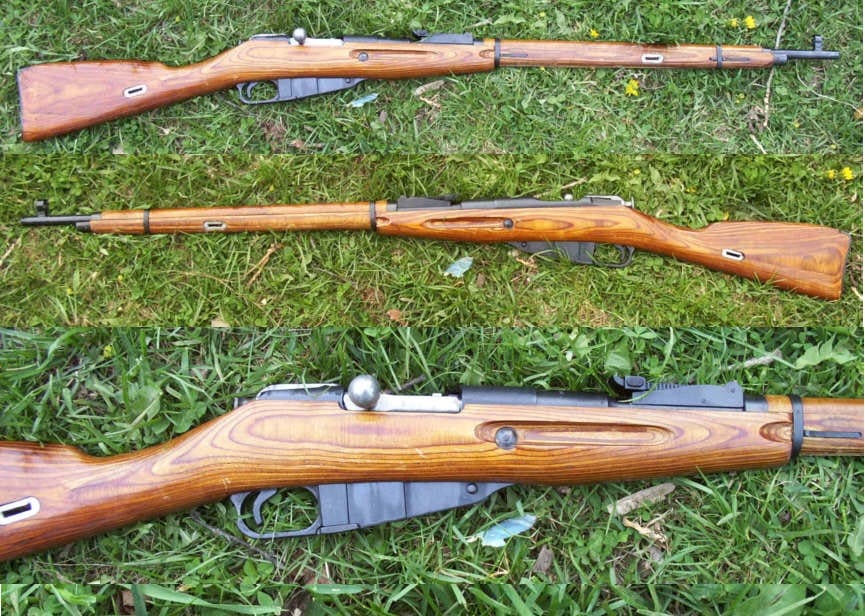Between 1891 and 1973, more than thirty-seven million 3-Line Rifle M1891s were produced, making it one of the most widely manufactured firearms of the 20th century. Today most firearms enthusiasts and weapons historians simply refer to it as the Mosin-Nagant.
The History
Development of the five-shot, bolt-action, internal magazine-fed military rifle began after the Russo-Ottoman War of 1877-1878. While the ten-month long war resulted in a Russian victory—in which the Russian Army marched almost all the way to the gates of Constantinople—the Russian troops were armed mostly with Berdan single-shot rifles. The Turkish forces were equipped with Winchester repeating rifles, and as a result, the Russians suffered heavy casualties.
It was clear that the Russians were badly in need of a new main battle rifle, and the Ministry of Defense of the Russian Empire began to evaluate different foreign-made rifles, most notably the French-made Lebel M1886. The Russian military then looked to new designs, and two seemed to show promise.
The first was a “3-line caliber” (.30 caliber or 7.62mm) design by Captain Sergi Ivanovich Mosin of the Russian Imperial Army, whilst Belgian automobile and arms designer Léon Nagant submitted a second design for a “3.5-line caliber” (.35 caliber or 9mm). The Russian military may have shown some favoritism to the Mosin design, but the refined design took elements of each—resulting in the Mosin-Nagant.
However, that didn’t sit well with Nagant, who filed a patent suit, and counterclaims were made that the Belgian manufacturer had borrowed elements from Mosin’s design. At issue was that Mosin—as a Russian Army officer—couldn’t apply for a patent, and his design was owned by the government and had the status of a military secret. In the end, the commission paid Nagant a sum of 200,000 Russian rubles, and that settled the issue. Léon Nagant and his brother Émile remained major contractors for the Russian government, and the Nagant M95 revolver even became the standard sidearm of the Russian Army.
The Name
Despite the fact that Mosin-Nagant is widely used today, the rifle was never known as such in Imperial Russia or the Soviet Union. To help address the issues with Nagant, the rifle was even just designated the 3-line rifle M1891. Only since 1924 was the rifle ever officially named “Mosin’s rifle.”
It was widely known as the Model 1891, and that version first saw use with the Imperial Russian Army in the Russo-Japanese War (1905), although there are reports that some may have been used by the Filipino Forces in the Philippine Revolution (1896-98). The original Russian versions were chambered in the 7.62×54-millimeter Russian cartridge that was later used by the Soviet Union and Warsaw Pact nations in subsequent rifles and machine guns. The Mosin-Nagant utilized a five-round non-detachable magazine and it had an effective range of five hundred meters.
Despite the eventual proliferation of the Mosin-Nagant, the rifle was actually in short supply during the First World War. Russian industry was unable to meet demand, and the government of Tsar Nicholas II contracted the American-based Remington Arms and New England Westinghouse to produce the rifle in the United States. The Russian government initially ordered 1.5 million.
Some 470,000 rifles were even delivered, but by then the October Revolution resulted in the downfall of the Russian government and the new Bolshevik regime under Vladimir Lenin refused to pay for the weapons. As a result, an additional 280,000 were subsequently sold to the United States Army to help ensure that Remington and Westinghouse didn’t face bankruptcy, and ironically many of those rifles used by those American and British troops that were part of the expeditionary force of the North Russia Campaign to support the anti-Bolshevik forces.
In 1930, the rifle was shortened – and the Model 1891/30 became the most prolific variant. It was the standard-issue rifle of the Soviet infantry from 1930 until 1945 and was used throughout the Second World War. Various carbine versions were also produced, but the design all began with the original 3-line rifle M1891.
Peter Suciu is a Michigan-based writer who has contributed to more than four dozen magazines, newspapers, and websites. He regularly writes about military small arms and is the author of several books on military headgear including A Gallery of Military Headdress, which is available on Amazon.com.

